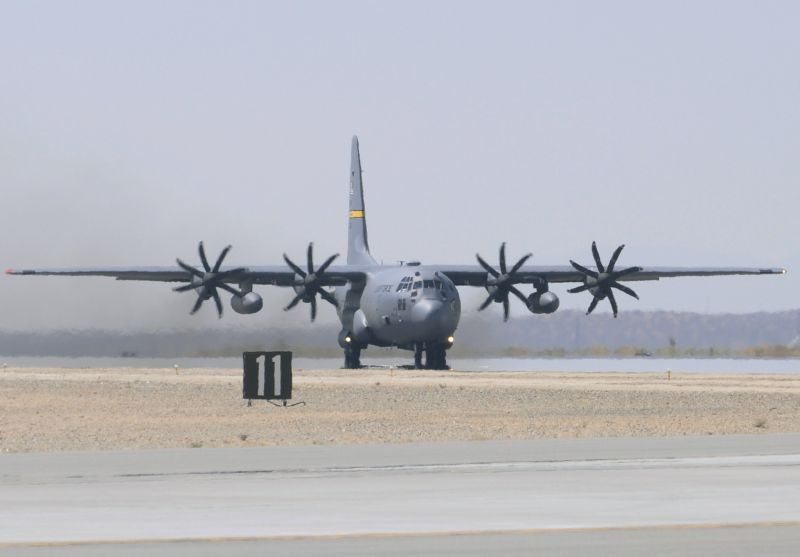All good things don’t necessarily need to come to an end; sometimes they are just replaced by something even better.
Such is the case with the venerable C-130H Hercules model aircraft here.
The C-130 has been around since the Vietnam War, forming the backbone of the Air Force’s tactical airlift fleet. It is especially well-suited to austere conditions like those found throughout Afghanistan.
The older C-130H models were recently replaced by the newer, more modern C-130J models. The newer model has the advantage of a longer fuselage offering two additional pallet positions for additional airlift capacity, an updated cockpit, more efficient engines and propellers, and other improvements.
“Inside, it’s a whole new aircraft,” said Lt. Col. Greg Lowe, the commander of the 455th Expeditionary Aircraft Maintenance Squadron. “In the cockpit, there are digital panels up front, so it takes a new breed of maintainers to fix all those new items.”
Despite the fact that some of the aircraft are 40 years old, the older C-130H model has enjoyed an enviable run, with a 94 percent reliability rate flying out of Bagram. The C-130J model is expected to increase that number.
“The H models have performed fantastic here in the (area of responsibility), virtually every day flying six or seven legs around Afghanistan, with hardly a maintenance issue,” Lowe said.
“The C-130H model here at Bagram has been truly outstanding,” added Col. Ben Spencer, the commander of the 455th Expeditionary Maintenance Group. “They are the oldest C-130 fleet here in the AOR, flying the highest utilization rate, yet they continually boast the highest mission capability rate in the AOR.”
As the first aircraft prepared for its final departure from Bagram, maintainers and flight crew alike reminisced about their time here with the C-130H models.
“When my maintainers arrived here, I briefed them that they were writing history, one sortie at a time; that they were also closing a chapter of history in this war, closing a chapter on the C-130H model here in Afghanistan,” Spencer said.
“This has kind of been a full circle for me,” said Capt. Matt Ward, a navigator on the first of the C-130H flights to depart Bagram for good. “I came here for the first time on the day that we got Bin Laden. Now I’m shutting down an aircraft model in Afghanistan, and going back to a squadron that is closing. The two are fittingly happening together.”
Ward’s crew was one of the last to perform a combat airdrop in Afghanistan. Some of the crew members had nearly 300 combat sorties to their credit on this deployment.
Several of the aircraft from Bagram will be refurbished at depot level maintenance and sold back to the Afghan air force. Others will be transferred to the Air National Guard and Air Force Reserve.
In a fitting handoff of duties, one of the first of the replacement C-130J models landed at Bagram moments before the first C-130H model took off. The in-flight C-130H passed its replacement as it taxied in to assume its position in the recently vacated parking space on the Bagram Airfield ramp.
“We hope that the J models will pick up the mantle and do as well as our H model brethren did,” Spencer said.










